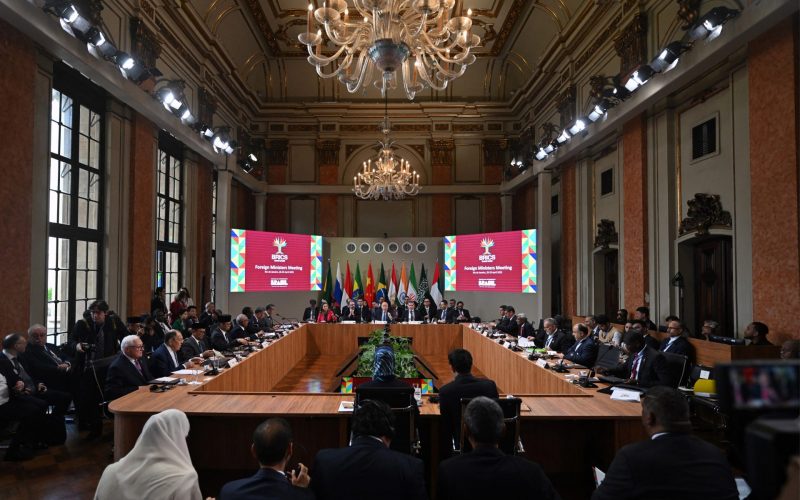The merits of centralised bargaining are a persistent source of debate. Some prominent voices have argued that the platinum sector is sufficiently homogeneous to warrant centralised bargaining, notwithstanding the general problems associated with the practice. Dominant unions are in favour as it increases the size of the stake available from being the officially recognised union across an entire sector. Mining houses are also generally in favour as it means fewer meetings and reduced transaction costs in the process of arriving at a wage settlement. While these short-term incentives may seem compelling, there are a number of problems with centralised bargaining that emerge in the long-term. Some points of clarification are also in order.
First, many commentators confuse centralisation with collectivisation. All bargaining between employers and unionised employees is effectively collective. This is distinct from being centralised across any given sector. One can have decentralised collective bargaining, which is what currently obtains in the platinum sector. The platinum sector is in fact unique in South Africa’s mining industry for not exercising centralised bargaining at an industry level. Even though bargaining is decentralised across the sector, it is still highly centralised on each mine, and this is where real changes are needed as argued below.
Second, the case for centralisation on the grounds that the platinum sector is relatively homogeneous and job categories and skills requirements are similar across companies is highly contested. The sector may be homogeneous to a point, but that is less of an issue than whether mineworkers themselves are relatively homogeneous in terms of job categories (and their associated consequent bargaining interests).
A major part of the problem with centralised bargaining in South African mines is that thresholds for unions to enter the bargaining forums are too high. At present, there is a much-publicised de facto closed-shop arrangement, where the only union to gain official recognition at the negotiation table is the one with a 50%+1 majority. This winner-takes-all approach is a function of poorly constructed labour relations legislation. And the precise reason it has been sub-optimal is because the heterogeneity of worker interests is not well represented at that table.
In fact, attainment of union office is highly lucrative, especially in light of recent revelations that mining houses have been paying retainers to full-time union members. Union business has subsequently become less about representing shaft-level workers and more about attainment of elite office with its associated perks.
Decentralised collective bargaining, however, would democratise the institutional framework in which bargaining occurs. Shaft-level workers would have more options than to merely pay subscriptions to the dominant union on any given mine. Sector-level centralised bargaining amplifies the risk of perpetuating the self-indulgent relationship that has developed between the dominant incumbent union and mine management.
Unfortunately, thanks to the institutional framework, AMCU now has every incentive to maintain the majoritarian system given its rapid ascendancy in the platinum union market. Sector-level centralisation would therefore only exacerbate the risk of destabilisation against the backdrop of volatile union rivalry for the official stakes.
Finally, it remains unclear as to exactly why platinum sector ‘homogeneity’ would increase the attractiveness of centralised bargaining anyway. Sector homogeneity or lack thereof does not seem to be the primary issue. The real issue is that of inclusive representation at the bargaining table and here there is much heterogeneity. At present, because NUM still retains dominance over all other sectors (besides platinum), they have an incentive to resist calls for democratised bargaining.
This explains why, in parliament at the beginning of June, the ANC in committee voted against the latest Labour Relations Amendment Bill clauses that called for the introduction of a pre-strike ballot. Had it not been for a walkout staged by the Democratic Alliance (DA), the Bill would have passed in the National Assembly with balloting written out. Balloting would require unions to democratically elicit its members’ preferences before going on strike, and this only 30 days after the declaration of a dispute being unresolved. Such a ballot would hurt union elites and complicate the negotiation process, as they would no longer be able to dictate bargaining on their own terms. But it would almost certainly improve the lot of less well-off workers that those unions purport to support, as it would directly increase their relative bargaining power. Of course, this on its own would not democratise the closed-shop arrangement – that would require further legislative work.
However, until such time as NUM – by virtue of its affiliation to COSATU – no longer has direct access to constructing the very legislation that is meant to independently secure the representation of the most marginalised workers, the status quo will remain. If we are to prevent another Marikana, real democratisation of the bargaining process must occur on two fronts.
First, union members’ preferences must be accurately ascertained through a ballot. This would prevent dictatorial behaviour by union elites.
Second, the closed-shop arrangement currently in place must be scrapped in favour of a much lower threshold. This would reduce the stake currently associated with being the officially recognised union. Most importantly, this would disincentivise unions from valuing violence over cooperation. That is where the solution lies.









